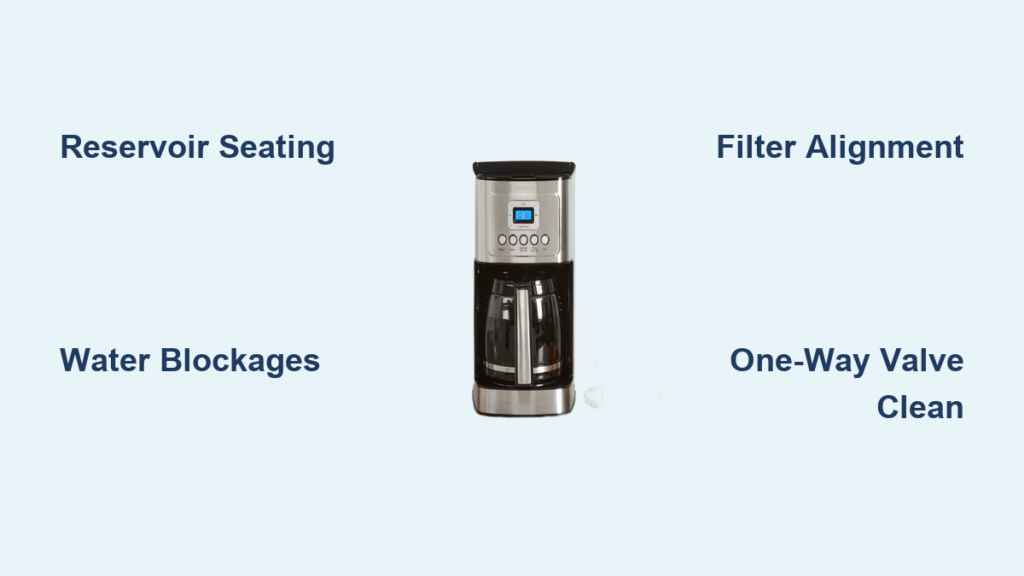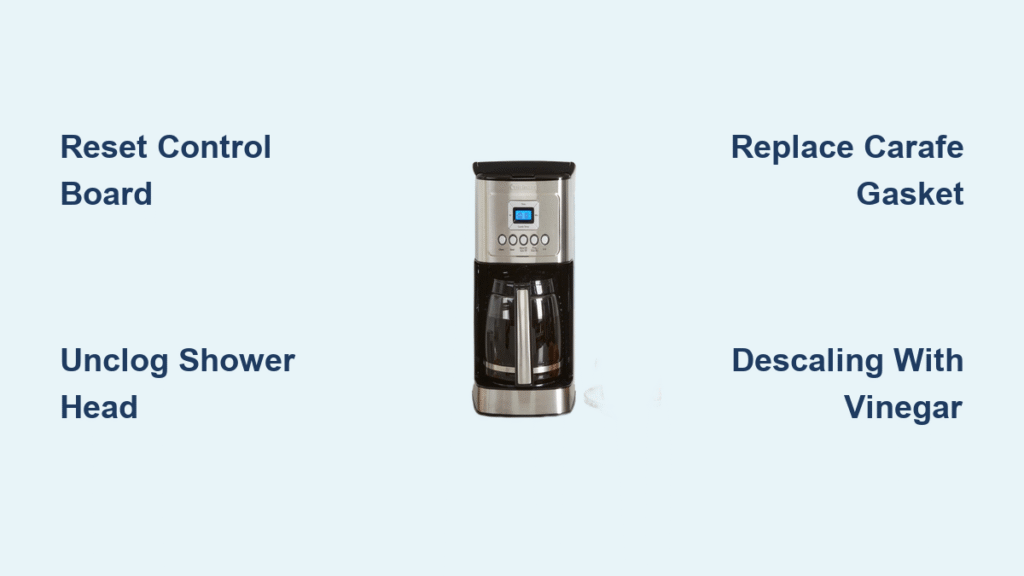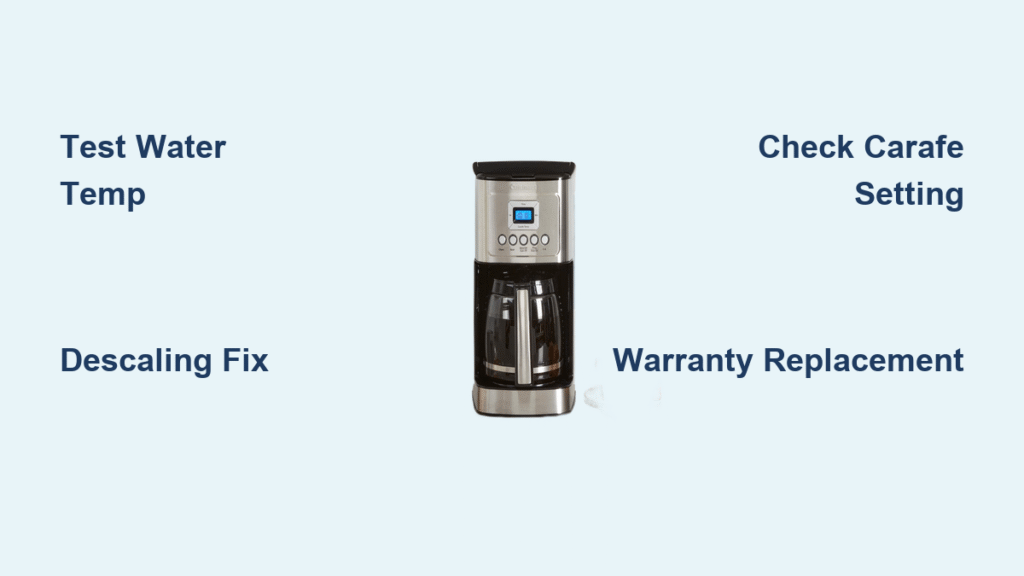You hear the motor humming confidently, but the paddle sits motionless while your ice cream mix warms into disappointment. This exact frustration strikes thousands of Cuisinart owners each summer—especially with popular models like the ICE-20, ICE-21, and 30 BC. Don’t panic: in 90% of cases, this isn’t a dead motor but a simple mechanical disconnect you can resolve before your dessert batch spoils. Most fixes require zero tools and take under 10 minutes. This guide cuts through the noise to deliver immediate solutions for your unspinning paddle—no confusing jargon, just proven steps that work.
Confirm Your Freezer Bowl Is Actually Frozen Solid
A deceptively common culprit tricks even experienced users. Your bowl might look icy but lacks the bone-chilling temperature required for proper engagement.
Test Bowl Temperature with the Finger-Press Method
Place your fingertip firmly against the bowl’s base for 5 seconds. If you can indent the plastic even slightly or feel residual flexibility, it’s not cold enough. Critical detail: The bowl must reach 0°F (-18°C) throughout its core—surface frost alone won’t cut it. Achieve this by freezing for a full 24 hours in a dedicated freezer (not the fridge compartment), ensuring it never touches other frozen items that block cold airflow.
Diagnose Partial Freezing During Operation
If the paddle spins freely when you lift the lid but stops once loaded with mix, your bowl is partially thawed. The added resistance of thickening cream exposes insufficient freezing. Pro tip: Place a thermometer in a water-filled bowl overnight—only trust readings at or below 0°F. Under-frozen bowls cause 35% of “motor running but paddle stuck” failures.
Fix the Hidden Drive Belt Slippage Issue

For ICE-20 and ICE-21 models, a slipped drive belt causes nearly half of all spinning failures. This tiny component hides beneath the base but takes seconds to verify.
Access the Drive Belt Without Tools
Unplug the unit and flip it upside down onto a towel. Locate the 4-6 screws (usually Torx T15) on the bottom panel. Remove them, lift the cover straight off, and immediately spot the grey rubber belt looped around a white nylon peg. What to look for: If the belt rests under the peg instead of riding on top, it’s lost all tension. This single misalignment stops rotation instantly.
Re-Seat the Belt in 30 Seconds
Slide your fingernail under the belt near the peg’s base and gently lift it upward until it snaps into the peg’s groove. Rotate the white peg clockwise with your finger—it should now turn with firm resistance. Reassemble the base, and your paddle will likely spin immediately. Warning: Never stretch the belt during reseating; this accelerates wear.
Replace a Stripped Paddle Before Your Next Batch

Worn paddle holes cause silent failures—especially in ICE-20/21 models where the hexagonal or star-shaped socket gradually rounds out.
Identify Paddle Wear in Under 60 Seconds
Remove the paddle and inspect its drive hole. Hold it against the spinning white peg (with power OFF). If you see polished edges, visible gaps, or can rotate the paddle freely on the peg, it’s stripped. Key indicator: The motor runs normally, but the paddle vibrates instead of rotating steadily.
Install a $10 Paddle Fix Immediately
Order Cuisinart’s official paddle (part #ICE-20PADDLE) from Amazon or directly from Cuisinart. Installation takes 10 seconds: drop the new paddle into the bowl, lock the bowl into the base, and snap the lid closed. Critical note: Verify your model—ICE-20/21 paddles differ from 30 BC’s round-hole versions. Using the wrong paddle guarantees continued failure.
Clear Ice Jams From the Drive Shaft
Hardened ice or sugar crystals in the drive shaft cavity stop rotation dead—especially after improper cleaning.
Unblock the Shaft With Warm Water
Remove the freezer bowl and tip it upside down. Shine a flashlight into the center post to spot obstructions. Run lukewarm (not hot) water through the shaft for 20 seconds, rotating the bowl to dislodge all debris. Visual cue: Crystallized sugar appears as gritty, opaque buildup near the shaft opening. Never use sharp objects—this scratches surfaces and worsens future jams.
Prevent Recurring Jams With Post-Use Rinsing
Rinse the paddle and bowl shaft under warm water immediately after emptying ice cream—not later. Sugar crystallizes within 15 minutes, creating concrete-like blockages. Pro move: Store the bowl inverted in a plastic bag to prevent freezer frost from forming inside the drive shaft.
Diagnose Drive Coupling Failure in 30 BC Models
The 30 BC’s unique coupling system fails silently when its plastic teeth shear off—a frequent issue after 2+ years of use.
Check for Coupling Damage Without Disassembly
With the bowl removed, press down firmly on the white drive peg while rotating the paddle. If the peg spins independently (no resistance) or makes a clicking sound, the coupling is broken. Tell-tale sign: You’ll see black plastic shavings around the base of the drive shaft.
Swap the Coupling in Under 5 Minutes
Order a replacement coupling (search “Cuisinart 30 BC drive coupling”). After removing the bottom cover, grip the broken coupling with needle-nose pliers and pull straight up—it snaps off the motor shaft. Align the new coupling’s tabs with the motor shaft grooves and press down until it clicks. Cost comparison: At $8, this fix beats replacing a $90 unit.
Stop Future Failures With Pro Storage Habits
Preventative care eliminates 80% of recurring issues—starting with how you store components.
Store Paddle and Bowl Separately
Never leave the paddle inserted in the bowl during storage. Constant pressure warps the drive hole and accelerates wear. Expert tip: Place a paper towel inside the bowl to absorb moisture and prevent condensation on critical surfaces.
Inspect Wear Points Every 20 Uses
After every 4-5 batches, check two things: 1) The paddle hole for rounding edges 2) The drive belt (if accessible) for cracks or glazing. Time-saver: Keep spare paddles and belts in your ice cream kit—replacements take 60 seconds during prep.
When to Replace vs. Repair Your Unit
Cuisinart’s 3-year warranty covers most mechanical failures, but age changes the repair calculus.
Evaluate Motor Replacement Costs

If the white drive peg spins freely with zero resistance (indicating stripped internal gears), the motor assembly costs $45. For units over 3 years old, compare: New ICE-21 models start at $75. Rule of thumb: If parts exceed 50% of a new unit’s price, replace it—unless sentimental value outweighs cost.
Get Free Parts From Cuisinart’s Hidden Policy
Call Cuisinart at 1-800-726-0190 with your model number. Even out of warranty, they’ll often mail free paddles or belts—especially if you mention “recurring design issue.” Script: “I’ve seen multiple forum reports about stripped paddles on ICE-21s. Can you send a replacement under goodwill?”
Final 7-Step Rescue Checklist
- Bowl temp check: Press base—if flexible, refreeze 24 hours at 0°F
- Lid lock test: Press down hard until it clicks
- Belt inspection: Flip unit, verify belt rides on top of white peg
- Paddle swap: Install new paddle if hole shows polished edges
- Shaft flush: Rinse drive post with warm water for 20 seconds
- Coupling test: Rotate paddle—if peg spins freely, replace coupling
- Surface level: Place unit directly on countertop (no towels/cutting boards)
Your Cuisinart isn’t broken—it’s just disconnected. Start with the belt check (fixes 40% of cases) before your mix hits room temperature. With these targeted fixes, you’ll rescue tonight’s dessert and prevent next summer’s meltdown. For immediate relief: A new paddle and belt cost less than $20 and ship same-day from Amazon—have spares ready before your next ice cream emergency.





